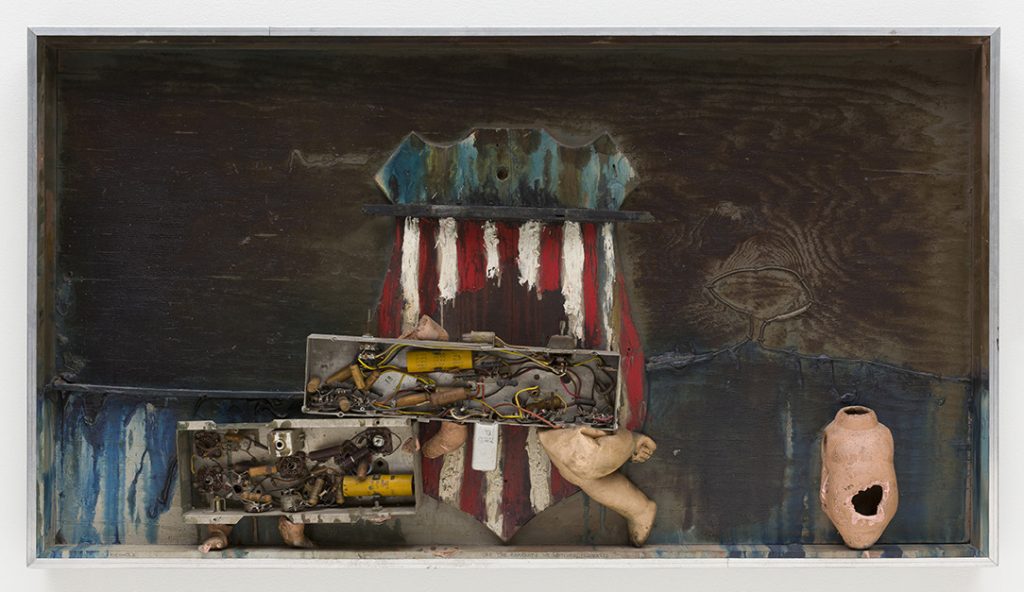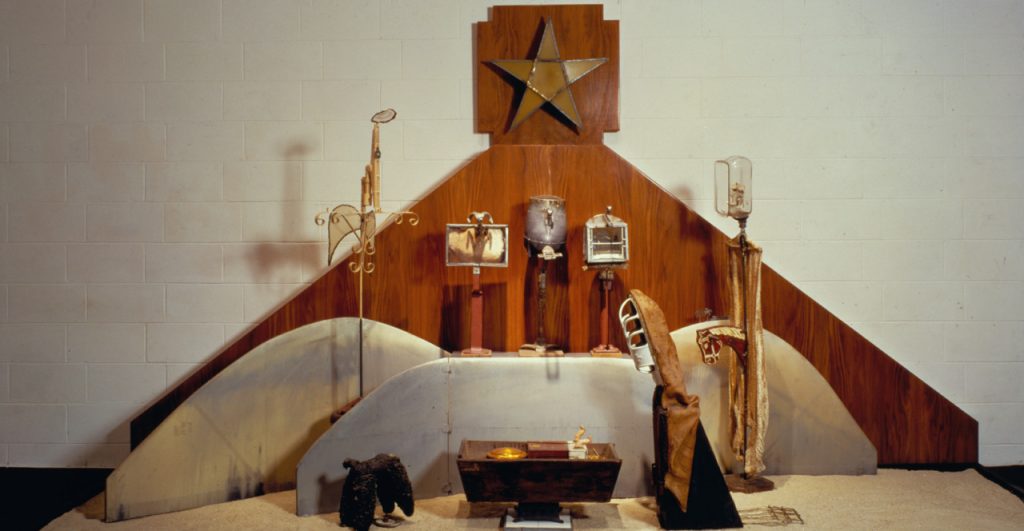

“Kienholz does not tend to sublimate the lowness and tragedy of life, the conditions of solitude and triviality, but rather uses them as tools that can highlight the low, popular universe, a place where the emaciated and filthy, the perverse and lurid, represent a new, surprising beauty.”
-Germano Celant, Five Car Stud Curator at Fondazione Prada
The rarely exhibited Kienholz environment “Five Car Stud” and 25 other works by this provocative and innovative couple are currently on display at Milan’s Fondazione Prada. Simply titled Five
Car Stud, the show highlights the extensive careers of Edward Kienholz and his wife Nancy Reddin Kienholz as they tackled significant topics of war, child abuse, women’s rights and the media.
Washington state native and founder of Los Angeles’ Ferus Gallery, Edward Kienholz (1927-1994) started exhibiting his assembled sculptures in 1961 with his first museum show at the Pasadena Art Museum. His work was also displayed among that of Picasso, Schwitters, Duchamp and Cornell
in the famed MoMA exhibition The Art of Assemblage that same year. European critics, such as Swedish curator Pontus Hulten, soon began to take notice of Kienholz’s imagination and his rejection of Abstract Expressionism, Pop Art and Minimalism.
Ed Kienholz became known for poking holes in conventional ideas and institutions. Some of Kienholz’s earliest assemblages and painted wooden reliefs, such as “’Ore the Ramparts We Watched, Fascinated” (1959), were concerned with the American-Soviet space race. Taking inspiration from “The
Star-Spangled Banner,” the work conjures imagery of war, independence and fireworks. However, we see tattered boxes of electronics and a ragged American flag seal, and learn that this work refers to the country’s overly optimistic efforts in the race’s early years – pointing to a sense of faded glory. Another
prominent work in his early career was “The Nativity,” (1961-64) a larger installation that anthropomorphized found objects, such as automobile hood ornaments, living room lamps and toy parts to create a three-dimensional reconstruction of Christ’s birth – a blinking traffic light takes the form of
baby Jesus’ head. Kienholz used these everyday items to examine humanity’s deification of materialism.
Stay tuned for the next post in this series, which will cover one of the Kienholz’s most recognizable and controversial works, “Five Car Stud,” (1969-1972). The large-scale environment depicts a gruesome, life-sized scene of heinous violence, forcing viewers to confront hatred and violence in our collective culture. The piece remained in storage for nearly 40 years, and is now finally on display again for all to see.
Five Car Stud is currently on display at Fondazione Prada through spring 2017. For more information, go to http://www.fondazioneprada.org/
IMAGES (top to bottom): Edward Kienholz, ‘Ore The Ramparts We Watched, Fascinated, 1959 painted wood, rope, radio parts, doll parts, other mixed media; Edward Kienholz, The Nativity, 1961, mixed media
